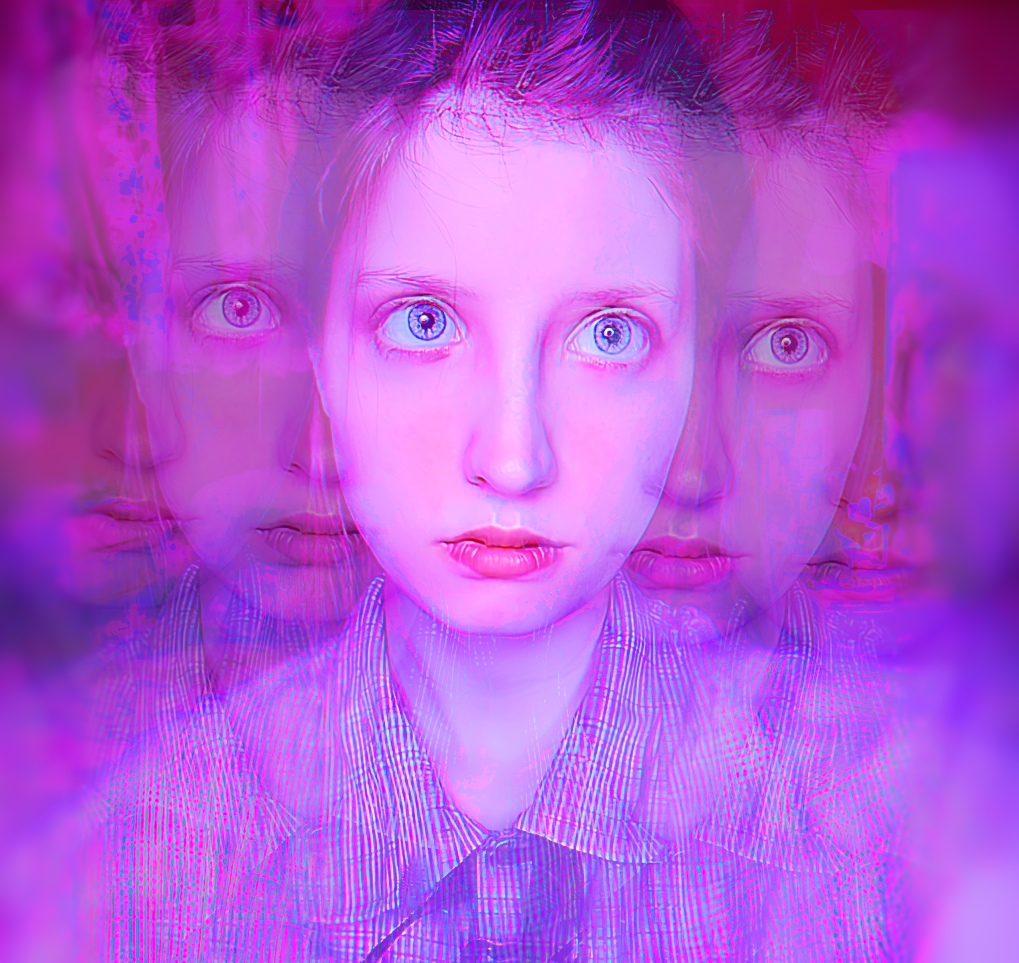
In the vast, rolling countryside of western Pennsylvania, where cornfields stretched endlessly and forests whispered secrets, I was a middle child searching for my voice. My childhood was a beautiful struggle, a constant quest to be heard, to express the complex universe that lived inside my mind.

My portraits don’t apologize for difference, it insists on it. In that insistence, I’m not seeking to be fixed or explained. I’m asking to be seen, on my own terms.
Living with Duane Syndrome[*] means my relationship with vision, perception, and movement is different from what many take for granted. My eyes don’t always work together the way they’re expected to, there’s a pull, a tension, a limit that others don’t see but I feel constantly. This neurological difference affects how I observe, process, and express.
In my art, you’ll often see visual echoes, like in this portrait where my face is repeated in a ghostly rhythm across the canvas. It’s not just a stylistic choice; it’s a reflection of how I experience my surroundings. My visual world is never entirely static. There’s a dissonance in alignment, a kind of spatial negotiation that I translate through layered imagery, soft blurs, and duplicated forms.
I work with color in extremes, vivid purples, saturated pinks, almost electric blues, because there’s an emotional intensity in the way I perceive things. When my eyes struggle to coordinate, there’s an internal pressure, a sensory overload that I try to externalize through bold palettes and surreal contrasts. These colors aren’t just visual; they’re visceral.
My work is not about creating perfect illusions of reality. It’s about translating my lived truth into something visual, emotional, and immediate. With Duane syndrome, I’ve learned to see differently, and through my art, I invite others to do the same.
Finally, my work belongs to a broader artistic movement that resists “normalcy”, not just in bodies, but in time, space, perception, and narrative. Disability aesthetics teaches us to rethink what is “normal” in how we see, move, and create. My portraits don’t apologize for difference, it insists on it. In that insistence, I’m not seeking to be fixed or explained. I’m asking to be seen, on my own terms.
About Duane Syndrome
[*]What is Duane Syndrome Type 1?
A congenital (from birth) eye-movement disorder where one eye has limited outward movement. When looking inward, the eye may pull back a bit and the eyelid opening can narrow.
That embodied way of looking drives my work today: layered figures, blur meeting clarity, electric color that holds memory and motion at once. Early undiagnosed learning disabilities and differences, made school a climb but honed my attention to texture, rhythm, and emotion. My paintings and mixed-media pieces choose “too much” on purpose, inviting viewers to recognize the parts of themselves that don’t neatly align. From kitchen-table sketches to gallery walls, I translate what the heart feels before the mouth can speak.